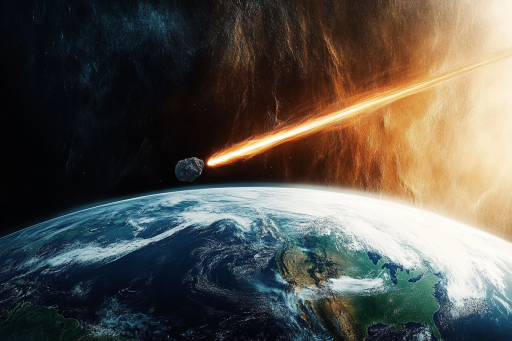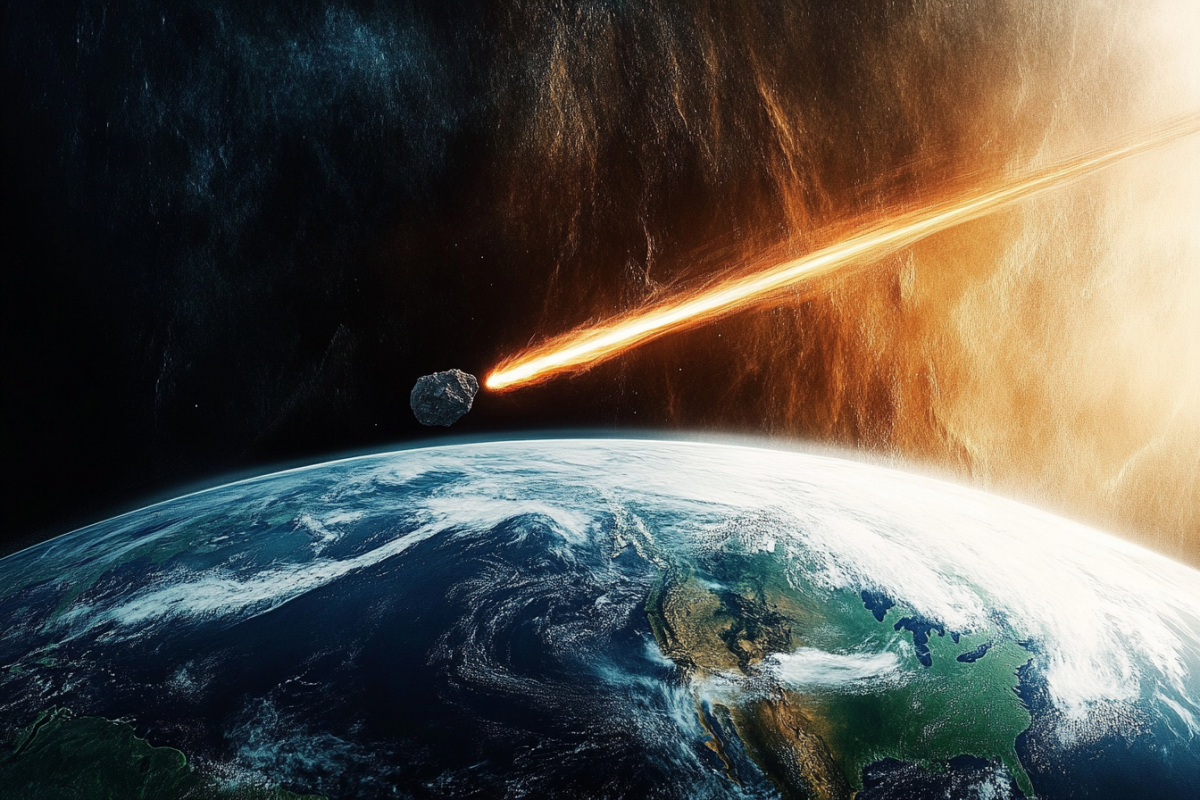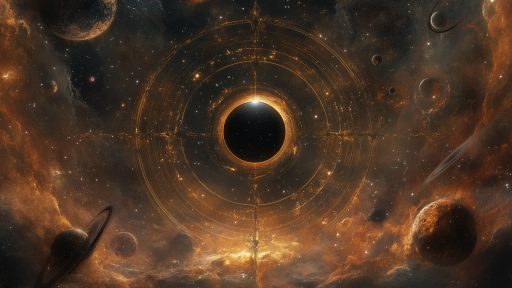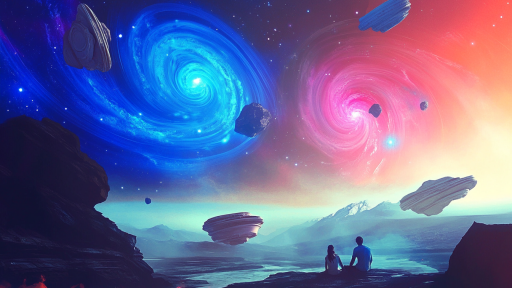
The cosmos is full of surprises, some of which have already shaken our planet and could return with little warning. From celestial explosions to mysterious cosmic forces, history has recorded events so powerful they altered the skies, disrupted civilizations, and left scientists searching for answers. Many of these forgotten phenomena could happen again, reminding us that Earth is not immune to the universe’s chaotic nature. The question isn’t if—but when—the next cosmic event will strike.
The Carrington Event – A Solar Storm That Could Black Out the World

In 1859, a massive solar storm known as the Carrington Event struck Earth, causing telegraph wires to spark, setting papers on fire, and lighting up the night sky with auroras visible as far as the tropics. If a storm of similar magnitude occurred today, it could cripple power grids, satellites, and communication systems worldwide. Scientists have warned that another solar superstorm is inevitable—it’s just a matter of time. The Sun’s cycles suggest that Earth could be overdue for another direct hit.
The Tunguska Explosion – A Mystery That Flattened a Forest

In 1908, an enormous explosion over Siberia leveled 800 square miles of forest in an instant. Scientists believe a comet or asteroid exploded mid-air before impact, unleashing energy equivalent to a thousand atomic bombs. If such an event happened over a populated area, the devastation would be catastrophic. With near-Earth objects constantly passing by, another unexpected cosmic explosion remains a real possibility.
The Great Dying – Could Another Extinction-Level Event Happen?

Approximately 252 million years ago, a cosmic or geological catastrophe wiped out nearly 90% of all life on Earth in an event known as the Permian-Triassic Extinction. Some theories suggest a massive asteroid impact or a deadly gamma-ray burst from space played a role. Modern scientists warn that extinction-level events have occurred in cycles, and Earth could be due for another. The only question is what form it will take—and when.
The Star That Went Supernova – And Almost Doomed Earth

Roughly two million years ago, a nearby supernova explosion bathed Earth in radiation, potentially altering climate and early human evolution. If another star close to us goes supernova, the blast of cosmic rays could strip away part of our atmosphere, increasing radiation levels on the planet. Astronomers monitor dying stars like Betelgeuse, which could explode within our lifetime, releasing a cosmic shockwave that might impact Earth.
The Yarkovsky Effect – Asteroids That Change Course Without Warning

An asteroid’s orbit can be subtly altered by sunlight, a phenomenon known as the Yarkovsky Effect. Over time, this force can nudge space rocks onto a collision course with Earth. Scientists track thousands of near-Earth objects, but many remain undetected, lurking in the darkness of space. The possibility of a sudden asteroid impact—without prior warning—remains one of the greatest threats from the cosmos.
The Dark Ages of the Universe – A Sudden Loss of Light

Billions of years ago, before the first stars ignited, the universe was shrouded in complete darkness. While this era ended long ago, some scientists theorize that rogue interstellar dust clouds could once again block out sunlight if Earth were to pass through one. A prolonged period of darkness would disrupt ecosystems, temperatures, and even civilization itself. The idea of Earth slipping into an unexpected cosmic blackout remains a chilling possibility.
The Disappearance of Earth’s Magnetic Field – A Cosmic Shield on the Brink

Earth’s magnetic field protects us from deadly solar and cosmic radiation, but it has weakened before—and could again. If the field collapses, solar storms could strip away parts of our atmosphere, exposing the planet to dangerous radiation. Some scientists believe we are in the early stages of a magnetic reversal, which could cause widespread technological disruptions and increased radiation exposure.
The Rogue Planet Threat – A Wandering World on a Collision Course

Astronomers have detected rogue planets—massive, planet-sized objects drifting freely through space without a star. If one were to enter our solar system, it could destabilize planetary orbits, triggering cosmic chaos. The gravitational pull of a rogue world could send asteroids hurtling toward Earth or even alter our planet’s path around the Sun. While rare, the possibility of such an encounter is not zero.
The Cosmic Gamma-Ray Burst – A Silent but Lethal Explosion

The universe’s most powerful explosions, gamma-ray bursts, can unleash more energy in seconds than the Sun does in its entire lifetime. If one were to strike Earth from a close enough distance, it could wipe out the ozone layer and trigger mass extinctions. While none are currently aimed at us, past mass extinctions have been linked to these invisible, deadly cosmic outbursts.
The Return of the Mega Comet – A Giant Ice Ball from the Oort Cloud

The Oort Cloud, a vast collection of icy debris at the edge of our solar system, occasionally sends enormous comets hurtling toward the inner planets. Some of these cosmic giants are many times larger than the asteroid that wiped out the dinosaurs. Astronomers have spotted mega-comets on trajectories that could bring them dangerously close to Earth in the coming centuries.
The Phantom Star – A Hidden Companion to the Sun?

Some researchers speculate that the Sun may have a distant, undetected companion star—sometimes called Nemesis—that periodically disturbs comets in the Oort Cloud. If true, this hidden celestial body could be responsible for cycles of mass extinctions on Earth. Though no evidence has confirmed its existence, the idea of an unseen cosmic force influencing Earth’s fate continues to intrigue astronomers.
When the Cosmos Reminds Us Who’s in Charge

The universe is not a passive backdrop—it’s an ever-changing force that has shaped Earth’s history and will continue to do so. While human civilization may feel invincible, the cosmos has a way of reminding us that we are at its mercy. Scientists work tirelessly to predict and prepare for the next cosmic disruption, but some events may arrive without warning. The only certainty is that the past will repeat itself, and the next cosmic upheaval is just waiting to happen.





